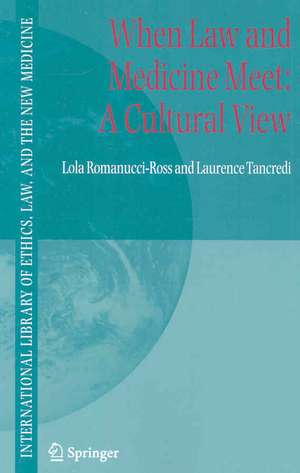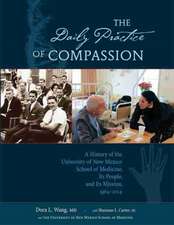Successful Science and Engineering Teaching: Theoretical and Learning Perspectives: Innovation and Change in Professional Education, cartea 3
Autor Calvin S. Kalmanen Limba Engleză Hardback – 14 apr 2008
| Toate formatele și edițiile | Preț | Express |
|---|---|---|
| Paperback (2) | 558.76 lei 38-44 zile | |
| Springer International Publishing – 29 aug 2018 | 558.76 lei 38-44 zile | |
| SPRINGER NETHERLANDS – 22 noi 2010 | 777.60 lei 38-44 zile | |
| Hardback (2) | 642.51 lei 6-8 săpt. | |
| SPRINGER NETHERLANDS – 14 apr 2008 | 642.51 lei 6-8 săpt. | |
| Springer International Publishing – 23 oct 2017 | 646.43 lei 6-8 săpt. |
Din seria Innovation and Change in Professional Education
- 15%
 Preț: 634.49 lei
Preț: 634.49 lei -
 Preț: 358.28 lei
Preț: 358.28 lei - 24%
 Preț: 804.99 lei
Preț: 804.99 lei - 18%
 Preț: 947.18 lei
Preț: 947.18 lei - 24%
 Preț: 689.09 lei
Preț: 689.09 lei - 18%
 Preț: 1334.36 lei
Preț: 1334.36 lei - 18%
 Preț: 898.58 lei
Preț: 898.58 lei - 18%
 Preț: 1014.76 lei
Preț: 1014.76 lei - 18%
 Preț: 948.29 lei
Preț: 948.29 lei -
 Preț: 391.02 lei
Preț: 391.02 lei - 18%
 Preț: 1123.98 lei
Preț: 1123.98 lei - 15%
 Preț: 642.36 lei
Preț: 642.36 lei - 15%
 Preț: 634.32 lei
Preț: 634.32 lei - 15%
 Preț: 636.80 lei
Preț: 636.80 lei - 18%
 Preț: 778.13 lei
Preț: 778.13 lei - 15%
 Preț: 640.71 lei
Preț: 640.71 lei - 15%
 Preț: 639.73 lei
Preț: 639.73 lei -
 Preț: 378.64 lei
Preț: 378.64 lei
Preț: 642.51 lei
Preț vechi: 755.88 lei
-15% Nou
Puncte Express: 964
Preț estimativ în valută:
122.96€ • 133.52$ • 103.29£
122.96€ • 133.52$ • 103.29£
Carte tipărită la comandă
Livrare economică 22 aprilie-06 mai
Preluare comenzi: 021 569.72.76
Specificații
ISBN-13: 9781402069093
ISBN-10: 140206909X
Pagini: 212
Ilustrații: XVI, 192 p.
Dimensiuni: 155 x 235 x 19 mm
Greutate: 0.48 kg
Ediția:2008
Editura: SPRINGER NETHERLANDS
Colecția Springer
Seria Innovation and Change in Professional Education
Locul publicării:Dordrecht, Netherlands
ISBN-10: 140206909X
Pagini: 212
Ilustrații: XVI, 192 p.
Dimensiuni: 155 x 235 x 19 mm
Greutate: 0.48 kg
Ediția:2008
Editura: SPRINGER NETHERLANDS
Colecția Springer
Seria Innovation and Change in Professional Education
Locul publicării:Dordrecht, Netherlands
Public țintă
ResearchCuprins
How Students Learn Science.- Intellectual Development and Psychological Types.- Students Alternative Scientific Conceptions.- Writing to Learn: Reflective Writing.- Changing Student's Epistemologies.- Getting Students to Examine Their Epistemology.- Critical Thinking.- Educational Models Based upon Philosophy of Science.- Changing Student's Epistemologies.- Final Thoughts.- Courses for Non-science Students.- Computer Assisted Instruction.- Summing Up.
Textul de pe ultima copertă
The intent of this book is to describe how a professor can provide a learning environment that assists students to come to grips with the nature of science and engineering, to understand science and engineering concepts, and to solve problems in science and engineering courses. As such, this book is intended to be useful for any science or engineering professor, who wants to change their course to include more effective teaching methods, to instructors at post-secondary institutions, who are beginning their careers, and as a handbook for TA’s. Since the book is based upon articles that I have had published in Science Educational Research and which are grounded in educational research that I have performed (both quantitative and qualitative) over many years, it will also be of interest to anyone engaged in research into teaching science and engineering at the post-secondary level. I have also tried to include enough background so that the book could be used as a textbook for a course in educational practice in science and engineering.
The book has two main axes of development. Firstly, how do we get students to change their epistemology so that their outlook on the course material is not that it consists of a tool kit of assorted practices, classified according to problem type, but rather that the subject comprises a connected structure of concepts. Secondly, helping students to have a deeper understanding of science and engineering.
The book has two main axes of development. Firstly, how do we get students to change their epistemology so that their outlook on the course material is not that it consists of a tool kit of assorted practices, classified according to problem type, but rather that the subject comprises a connected structure of concepts. Secondly, helping students to have a deeper understanding of science and engineering.
Caracteristici
Reflective writing is a gathering of thoughts on a chosen topic and then a rethinking of thoughts to develop knowledge Activities that help to get students to examine their conceptual framework so that they will not mishear their instructor, nor misread their textbook Develop a design to cause the students to undergo a critical discussion to decide which natural interpretations can be kept and which must be replaced
Descriere
Descriere de la o altă ediție sau format:
The intent of this book is to describe how a professor can provide a learning en vironment that assists students to come to grips with the nature of science and engineering, to understand science and engineering concepts, and to solve problems in science and engineering courses. As such, this book is intended to be useful for any science or engineering professor, who wants to change their course to include more effective teaching methods, to instructors at post-secondary institutions, who are beginning their careers, and as a handbook for TA’s. Since the book is based upon articles that I have had published in Science Educational Research and which are grounded in educational research that I have performed (both quantitative and qualitative) over many years, it will also be of interest to anyone engaged in research into teaching science and engineering at the post-secondary level. I have also tried to include enough background so that the book could be used as a te- book for a course in educational practice in science and engineering. The book has two main axes of development. Firstly, how do we get students to change their epistemology so that their outlook on the course material is not that it consists of a tool kit of assorted practices, classified according to problem type, but rather that the subject comprises a connected structure of concepts. Secondly, he- ing students to have a deeper understanding of science and engineering.
The intent of this book is to describe how a professor can provide a learning en vironment that assists students to come to grips with the nature of science and engineering, to understand science and engineering concepts, and to solve problems in science and engineering courses. As such, this book is intended to be useful for any science or engineering professor, who wants to change their course to include more effective teaching methods, to instructors at post-secondary institutions, who are beginning their careers, and as a handbook for TA’s. Since the book is based upon articles that I have had published in Science Educational Research and which are grounded in educational research that I have performed (both quantitative and qualitative) over many years, it will also be of interest to anyone engaged in research into teaching science and engineering at the post-secondary level. I have also tried to include enough background so that the book could be used as a te- book for a course in educational practice in science and engineering. The book has two main axes of development. Firstly, how do we get students to change their epistemology so that their outlook on the course material is not that it consists of a tool kit of assorted practices, classified according to problem type, but rather that the subject comprises a connected structure of concepts. Secondly, he- ing students to have a deeper understanding of science and engineering.









